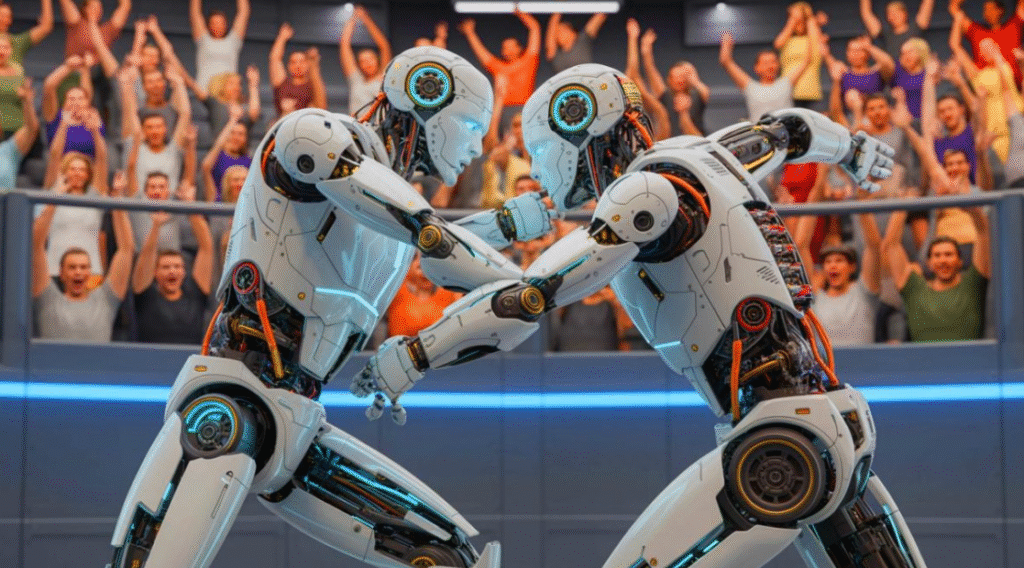AI-powered humanoid robots are gearing up to compete in an international sporting event—the World Humanoid Robot Games. This competition, which blends science with sport, is poised to redefine our relationship with technology and push the limits of what intelligent machines can do.
The Dawn of a New Era in Robotics
In the past, robots were mostly confined to industrial spaces assembling car parts, packing goods, or exploring hazardous areas. But with rapid advances in AI and robotics, machines are now becoming more agile, more human-like, and more intelligent. The upcoming World Humanoid Robot Games is a testament to how far we have come.

Humanoid robots machines designed to look and move like humans—will compete in events that test not only their physical capabilities like speed, balance, and agility, but also their mental agility such as problem-solving and decision-making. Experts will judge these robots based on how they mimic human movement, adapt to unexpected situations, and interact intelligently with their surroundings
What Will the Robot Games Look Like?
The event is expected to include a variety of competitions that resemble human athletic challenges. Robots may take part in sprint races, obstacle courses, ball games, and possibly team-based strategy events. Each challenge will demand a unique combination of physical engineering and artificial intelligence.
Unlike traditional robots, these competitors walk, run, jump, and even make decisions on the fly. Complex AI algorithms and constantly scanning sensors power these abilities by providing real-time environmental feedback.
Organizers have confirmed that the games are not simply a test of strength but of coordination, intelligence, and real-time adaptability. The goal is to push the boundaries of what robots can do in dynamic, real-world situations.
The Technology Behind the Robots
Engineers build these humanoid robots using advanced technologies that combine artificial intelligence, mechanical engineering, computer vision, and deep learning. They equip the robots with cameras, sensors, gyroscopes, and other high-tech components that help them balance, navigate uneven terrain, recognize objects, and interact using voice or facial expressions.
Each robot is a product of years of research and development, often backed by universities, tech companies, or robotics labs. In many cases, the robots can learn from experience, which means they can improve their performance over time just like human athletes.
Living and Working Alongside Humanoid Robots
The World Humanoid Robot Games signals a future where humans and robots will increasingly share space—not just in industries, but in public, domestic, and personal environments. Rather than replacing people, these robots are being developed to assist, collaborate, and support human life.
Events like this help build trust between humans and AI, breaking down fears about automation and showcasing how intelligent machines can enhance life, not threaten it.
As this historic competition kicks off, the world will be watching not just to see which robot wins, but to witness a glimpse of the future. A future where machines walk among us not as competitors, but as companions, co-workers, and co-creators of a smarter world.


 AI Robots Help Kenyan Farmers Remove Weeds and Work Fields
AI Robots Help Kenyan Farmers Remove Weeds and Work Fields